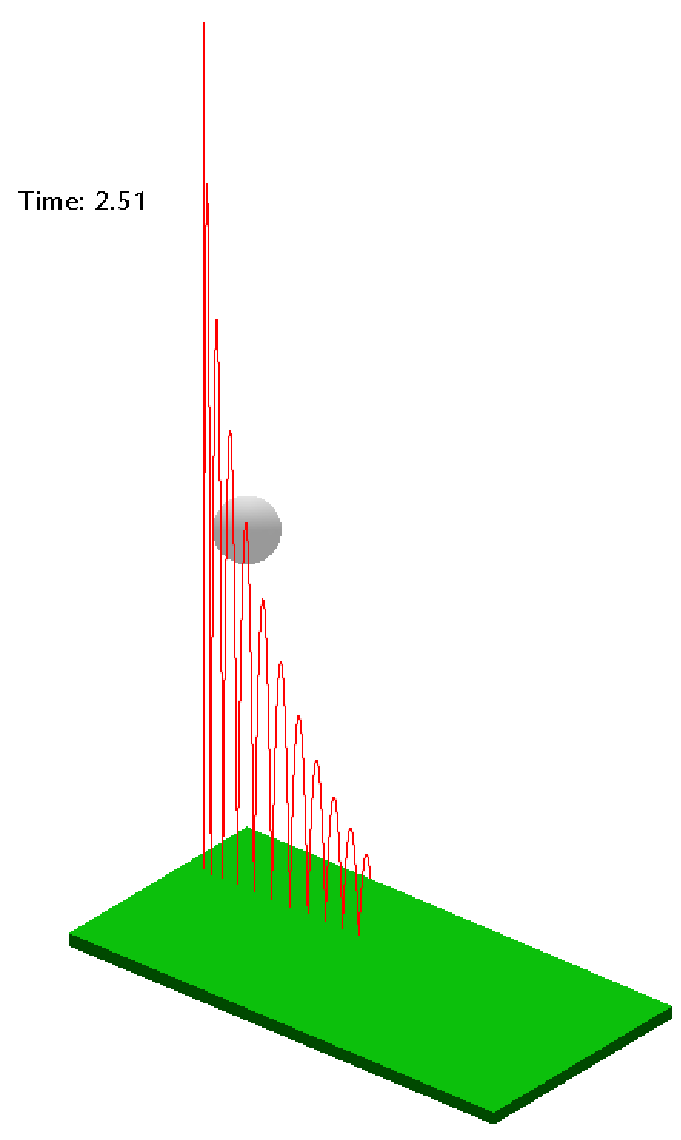Community Tip - Have a PTC product question you need answered fast? Chances are someone has asked it before. Learn about the community search. X
- Community
- Creo+ and Creo Parametric
- 3D Part & Assembly Design
- A bouncing ball simulation
- Subscribe to RSS Feed
- Mark Topic as New
- Mark Topic as Read
- Float this Topic for Current User
- Bookmark
- Subscribe
- Mute
- Printer Friendly Page
A bouncing ball simulation
- Mark as New
- Bookmark
- Subscribe
- Mute
- Subscribe to RSS Feed
- Permalink
- Notify Moderator
A bouncing ball simulation
I was scanning the social net a few days ago, and came across this discussion in another community:
I am trying to create a dynamic simulation of a bouncing ball as part of my advanced CAD class. I am familiar with the mechanism tool (I am actually using Creo, but it is very similar to Pro/Engineer) however the only dynamic simulation I have ever analyzed was pendulum motion. With the bouncing ball I do not know how to set up a contact surface. If I model the rubber ball with a coefficient of restitution I assume it will bounce. So how would I set up this contact surface. All I need is a simple flat surface for the ball to bounce on.
If anyone could point me towards some tutorials or examples I would be very grateful.
Personally, I don't know how to do this (I haven't used Creo since it was Pro/ENGINEER - then again, I'm not at all in the PTC Creo business unit!) - but I *do* know that I work with some incredibly smart people. So, I connected with Moshe Baum on this. He replied:
A simple rigid ball can be illustrated easily (see corresponding files). The bounce can be controlled by the liftoff coefficient:

You can see a video of the simiulation Moshe did for me here:
Moshe was also gracious enough to send along a .zip file of the files used to create this. They are attached as well.
Thanks for your help, Moshe!
- Mark as New
- Bookmark
- Subscribe
- Mute
- Subscribe to RSS Feed
- Permalink
- Notify Moderator
You could also do this using a 3D contact. So when do actually use a 3d contact and when a cam-connection?
- Mark as New
- Bookmark
- Subscribe
- Mute
- Subscribe to RSS Feed
- Permalink
- Notify Moderator
Hi Alan, I developed a simple bouncing ball experiment to help science teachers teach coefficient of restitution.
The model uses the mechanism module in Creo with a cam connection between the ball and the floor. Moshe is correct in saying the cam connection has the option to enable liftoff within the range of 0-1. Zero behaves like wet clay with no bounce and a value of 1 rebounds to the same height as the release. This liftoff value is the same as coefficient of resitution.
A dynamic anlysis with gravity enabled is created and run. The floor was anlged to get the ball to move sideways as it bounced.
The attached ZIp file contains an explanatory PDF and the Creo models.







